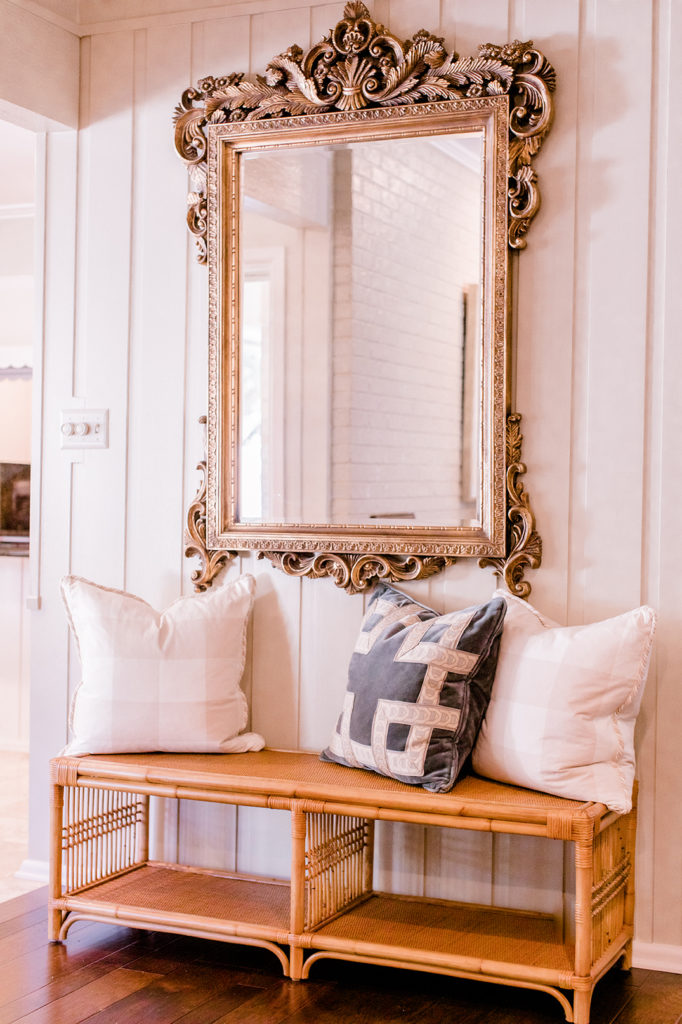Curtains, Rugs, Pillows, and Wall Art
 Decorating your home begins with imagination coupled with inspiration. But in the end, it comes down to details. And for many, those details are difficult to nail down. Though design is a creative process, there are some hard and fast rules that, when used, bring the overall look of your space into balance.
Decorating your home begins with imagination coupled with inspiration. But in the end, it comes down to details. And for many, those details are difficult to nail down. Though design is a creative process, there are some hard and fast rules that, when used, bring the overall look of your space into balance.
Here are some tips and tricks to use when you’re down to the details of design.
The Do’s and Don’ts of Hanging Curtains

Do install your curtain rod above your window molding. In a best case scenario, place the curtain rod just under your crown molding or ceiling. If you have a very high ceiling, install curtains anywhere between six and twelve inches above the window molding. This will elongate the look of your window.
Do install your curtain rod at least six inches outside of your window frame when possible. This will give the illusion that your window is wider than it appears.
Don’t let your curtains dangle in the air when hung.
Don’t install your curtain rod on the window molding. This will drag the eye down and make the room and window appear smaller and shorter.
Here are your three options:
- Brush the floor: A tailored, clean look where the curtain just brushes the flooring.

- Breaking the floor: Add an additional one to three inches to the overall length of your curtain.

- Pool on the floor: Add an additional four to six inches to the overall length of your curtain to allow the curtain fabric to cascade under the window.

Pillow Perfection 
Have you ever had this happen? You buy some fantastic pillow shams to spruce up your couch or bedding. At last they arrive, you stuff the pillow form inside the sham and…. wait. Why do they look so sad and lumpy? Chances are you purchased the wrong size pillow form.
It seems logical to place a 20” x 20” pillow form inside a 20” x 20” pillow sham, right? Wrong. When you purchase your pillow form, be sure to buy one size larger than your pillow sham. 
Here’s a helpful example:
- 20” x 20” pillow sham- purchase a 22” x 22” pillow form
- 18” x 18” pillow sham- purchase a 20” x 20” pillow form
Local craft stores carry pillow forms in a variety of sizes and you can search online for those special sizes that are harder to find. Overstuffing your pillow sham will result in a plush, cushy pillow that will make your space perfect.
Radiant Rugs 
You may not realize it but a good rug can do wonders for a room. Yes, it’s comfortable underfoot, but it performs several tasks as well. A rug anchors your space and lends color and texture to the room. It also provides warmth when layered on top of your flooring. Have a loud room that seems to echo? Add a rug to your space. It will absorb and deflect noise- problem solved!
But what size rug is best for your space? Here are some tips:
Living Room:
- If your room allows (as well as your rug budget), find a rug large enough for you to place each piece of furniture completely on the rug.
- At the very least, the front legs of your chairs and sofas should be on the rug.
- Leave at least 12 inches of exposed flooring between the wall and your rug. You don’t want the rug to look like wall-to-wall carpeting.
- Bigger is better. When in doubt, purchase the largest sized rug your room can accommodate while still allowing for that border of exposed flooring on each side.
Bedroom:
- It’s best if you can place your nightstands and bed under one large rug that will extend past the foot and both sides of the bed by at least 18 inches.
- If you have a smaller rug, lay it under the bed only.
- If you have an even smaller rug, lay it under the lower two-thirds of the bed making sure it still extends past the footboard.
Dining Room:
- Be sure that your rug fits under both table AND chairs.
- Find a rug that extends past the sides of you dining table at least 24 inches on each side. This way, chair legs won’t catch the rug as they are pulled away from or back toward the table.
Wondrous Wall Art
Is there anything more intimidating than a big blank wall? There are so many options to choose from. Mirrors, artwork, shelves and more. Here are a couple of tips that will help you shake off those blank wall woes.
Hanging wall art in a hallway or a blank wall:
When hanging a piece of artwork, mirrors or a decorative piece of wall art, there is a simple rule of thumb to follow: hang the piece of wall art so that its vertical middle (i.e. the middle of the frame) is 57 inches above the floor. This essentially places wall art at eye level where it can be appreciated at its best advantage.
If you are hanging artwork in a room with very tall ceilings and want to really fill the wall out, begin by hanging your first piece of wall art 57 inches above the floor then add additional artwork above it.
Hanging wall art above a piece of furniture:
We tweak the rule above just a bit when hanging wall art over a piece or furniture. You don’t want the piece of wall art to float aimlessly above your piece of furniture. Instead, hang it five to ten inches above it. This will naturally balance the two pieces and you will see a cohesive look come together.
Working through a floor plan, hanging artwork and purchasing items for your home can be difficult. There are almost too many options out there these days. But when you take your time, plan a space thoughtfully and follow some tried and true rules, you will see the difference. Your room will strike a balance and the space will look perfectly filled. Happy measuring!
By Callie Harris
Photos by Shayli Anne Photography


























Leave a Reply